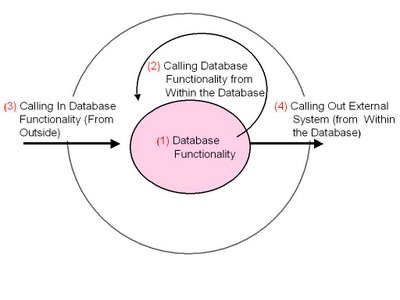Ain't no enterprise applications without a database (RDBMS), still some of us have the tendency to think of databases as dumb data repositories or mere storage engines for Relational/Structured, Binary/MultiMedia, Documents/Unstructured and Semi-Structured/Messages data. If so, as Henri Bergson wrote "The eye can only see what the mind is prepared to accept" -- iow, you cannot see and utilize all their possibilities.
An exhaustive coverage of database functionality, that you get out-of-the-box, and those that you can build yourself is beyond the scope of a blog -- but range from OLTP to OLAP/Business Intelligence, from Messaging to Content Management, and much more.
In the next posting I'll touch on programming models that you can use to build database functionality, also known as data logic.
Oracle Database Integration with Java, JavaScript, Hadoop, Spark I - Java in the database, JDBC, UCP, DRCP, Application Continuity, Transaction Guard II - Oracle Datasource for Hadoop (OD4H), In-Database Container for Hadoop, Orale Datasource for Spark III - JavaScript Stored Procedures using Nashorn All topics discussed here represent my own opinions and speculations.
Monday, April 24, 2006
Sunday, April 16, 2006
What 360 degrees Database Programming Means

As some of you have asked me privately -- don't be shy, post your comments :), what the h. does 360 degree database programming means? Well, 4 things that i will elaborate on in following posts: (1) the database functionality itself, (2) calling database functionality from within the database, (3) calling database functionality from outside (client, middle-tier, etc), and (4) calling external system/functionality from within the database.
Subscribe to:
Comments (Atom)